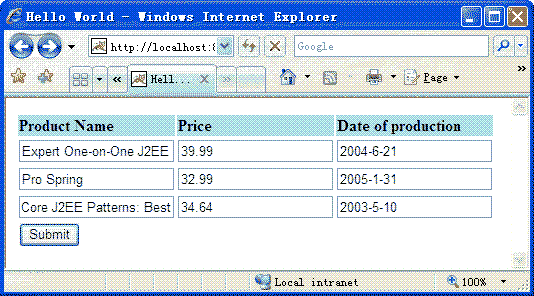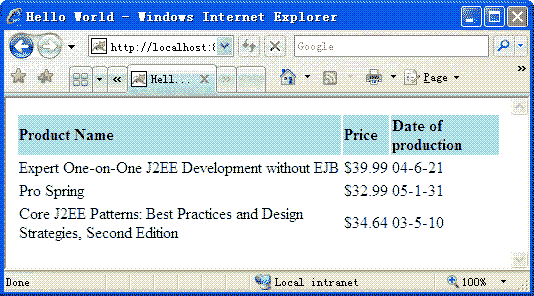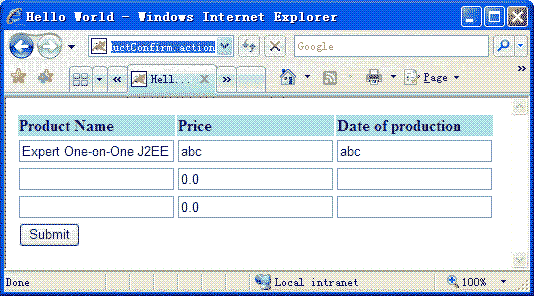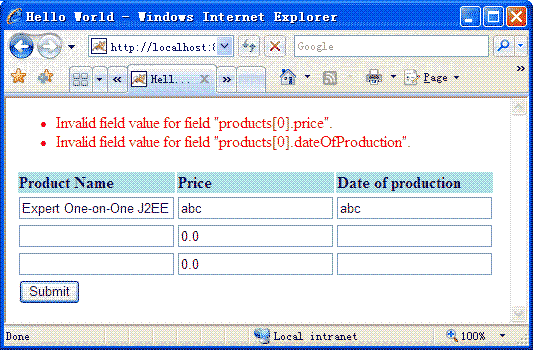注意system32目錄的php_mysql.dll和php_mysqli.dll
window目錄下面需要有php.ini
以及iis的fastcgi指向的php-cgi.exe所在的目錄,
用phpinfo看看系統壞境變量加載的是哪個php.ini文件,
這里面的extension_dir="D:\WORK\php-5.5.5-nts\ext"
要配置正確;這樣才能訪問得到;
iis8的rewrite用自帶(也可能是安裝了后的)里面的;
]]>
1 var path;
2 function getFullPath(){
3 if (window.navigator.userAgent.indexOf("MSIE") >= 1) {//IE
4 obj.select();
5 path = document.selection.createRange().text;
6 }
7 else{//FireFox & Chrome
8 var file =obj.files[0];
9 var reader = new FileReader();
10 reader.onload = function(e){
11 path = e.target.result;
12 }
13 reader.readAsDataURL(file);
14 }
15 }
2 function getFullPath(){
3 if (window.navigator.userAgent.indexOf("MSIE") >= 1) {//IE
4 obj.select();
5 path = document.selection.createRange().text;
6 }
7 else{//FireFox & Chrome
8 var file =obj.files[0];
9 var reader = new FileReader();
10 reader.onload = function(e){
11 path = e.target.result;
12 }
13 reader.readAsDataURL(file);
14 }
15 }
注意這邊onload 是閉包,會先執行reader.readAsDataURL(file)里面的方法。
找了好久都沒有出來,原來要這樣寫。
// objPreview.src = obj.files[0].getAsDataURL(); //這個也適用于FF
轉載自 路在何方,]]>
]]>
2
3
4 public Outer() {
5 System.out.print("a");//構造方法,new的時候才會出現,且后于變量的創建
6 }
7
8
9
10 public static void sayOther(String s){
11 System.out.print(s);
12 }
13
14
15
16 public int say(String s){
17 System.out.print(s);
18 return 0;
19 }
20
21
22 //初始化塊,在new時,構造方法之前,變量之前執行
23 {
24 System.out.print("c");
25 inner.innerMethed("d");
26 }
27
28
29 private static inner t= new inner();//靜態變量,這些都是在類加載完之前就放于內存中,且只加載這一次,new類對象時是不會再次執行的了。
30 static
31 {
32 System.out.print("e");
33 inner.innerMethed("f");//靜態初始化塊,整個靜態的都是在加載之前就做好初始化。
34 new inner();
35 }
36
37
38 private int i=say("g");//在new時,先于構造但是后于初始化塊的一個實例變量,也即:實例對象:(實例初始化塊,實例變量)--->構造方法
39 private inner tt=new inner();//整個是在類加載ClassLoader之后初始化變量時,才做。每個new對象都會執行上面這個步驟
40 private innerOther ttt=new innerOther();
41
42
43
44 static class inner{
45
46
47 public inner(){
48 System.out.print("h");
49 }
50
51
52 public static void innerMethed(String s){
53 System.out.print(s);
54 }
55
56
57
58 {
59 System.out.print("i");
60 }
61
62
63
64 static
65 {
66 System.out.print("j");
67 }
68
69
70 }
71
72
73
74 class innerOther{
75
76
77 public innerOther(){
78 System.out.print("k");
79 }
80
81
82 {
83 System.out.print("l");
84 }
85
86
87
88 }
89
90
91
92 public static void main(String[] args) {
93 System.out.print("m");
94 Outer outer = new Outer();
95 System.out.print("n");
96
97 //總結就是:類對象,變量的加載順序
98 //在整個類加載完成之后,就初始化靜態(靜態變量,靜態塊),其中可以new對象,別的類調用靜態方法。靜態的只做這一次,然后類加載器ClassLoader就把類Class返還,執行main方法。
99 //在new類對象時,執行順序是:(實例初始化塊,實例變量)-->構造方法。每new一個對象時,都會執行這個步驟。
100
101 //(靜態變量、靜態初始化塊)—— 》 (變量、初始化塊)—— 》 構造函數,()中的內容是按照代碼前后循序執行
102
103 //當有繼承關系時,還是基于這個原理,如new Son();
104 //父類的靜態(塊和變量)-->子類的靜態(塊和變量)-->父類的(塊和變量+構造方法)-->子類的(塊和變量+構造方法)
105 //
106 }
107 }
//類的是通過:裝載,連接,初始化
//java程序在執行過程中,類,對象以及它們成員加載、初始化的順序如下:
// 1、首先加載要創建對象的類及其直接與間接父類。
// 2、在類被加載的"同時"會將靜態成員進行加載,主要包括靜態成員變量的初始化,靜態語句塊的執行,在加載時按代碼的先后順序進行。 <clinit>
// 3、需要的類加載完成后,開始創建對象,首先會加載非靜態的成員,主要包括非靜態成員變量的初始化,非靜態語句塊的執行,在加載時按代碼的先后順序進行。
早餐2塊2
]]>
解決辦法
1、配置web.xml 解決,增加對FORWARD請求的過濾,自然問題就解決了
1 <filter-mapping>
2 <filter-name>struts2</filter-name>
3 <url-pattern >/*</url-pattern>
4 <dispatcher>INCLUDE</dispatcher> //增加對<jsp:include page="xxx.action"/>及其<s:include value="xxx.action"/>支持
5 <dispatcher>REQUEST</dispatcher>
6 <dispatcher>FORWARD</dispatcher>
7 </filter-mapping>
2 <filter-name>struts2</filter-name>
3 <url-pattern >/*</url-pattern>
4 <dispatcher>INCLUDE</dispatcher> //增加對<jsp:include page="xxx.action"/>及其<s:include value="xxx.action"/>支持
5 <dispatcher>REQUEST</dispatcher>
6 <dispatcher>FORWARD</dispatcher>
7 </filter-mapping>
2、用javascript解決,讓請求執行到頁面時,接著執行如下的代碼,發現頁面需要重載,然后就重新發送請求REQUEST,這樣當然就會被過濾器所截獲到了。
<script language="javascript">location.replace(URL)</script>
3、利用html meta,等于也是讓頁面等待零秒刷新頁面,重新發送請求,達到目的。
<meta http-equiv="refresh" content="0;URL=xxx.action">;
上文轉載自解決Struts2中forward問題!
]]>
1 <form action="" method="post">
2 .............................................
3 <input type="submit" value="保存" />
4 <input type="submit" value="打印" />
5 </form>
由于在<form>中的多個提交按鈕都向一個action提交,使用Struts2 Action的execute方法就無法判斷用戶點擊了哪一個提交按鈕。如果大家使用過Struts1.x就會知道在Struts1.2.9之前的版本需要使用一個LookupDispatchAction動作來處理含有多個submit的form。但使用LookupDispatchAction動作需要訪問屬性文件,還需要映射,比較麻煩。從Struts1.2.9開始,加入了一個EventDispatchAction動作。這個類可以通過java反射來調用通過request參數指定的動作(實際上只是判斷某個請求參數是不存在,如果存在,就調用在action類中和這個參數同名的方法)。使用EventDispatchAction必須將submit的name屬性指定不同的值以區分每個submit。而在Struts2中將更容易實現這個功能。 2 .............................................
3 <input type="submit" value="保存" />
4 <input type="submit" value="打印" />
5 </form>
當然,我們也可以模擬EventDispatchAction的方法通過request獲得和處理參數信息。但這
樣比較麻煩。在Struts2中提供了另外一種方法,使得無需要配置可以在同一個action類中執
行不同的方法(默認執行的是execute方法)。使用這種方式也需要通過請求參來來指定要執
行的動作。請求參數名的格式為
action!method.action
注:由于Struts2只需要參數名,因此,參數值是什么都可以。
下面我就給出一個實例程序來演示如何處理有多個submit的form:
【第1步】實現主頁面(more_submit.jsp)
1 <%@ page language="java" import="java.util.*" pageEncoding="GBK"%>
2 <%@ taglib prefix="s" uri="/struts-tags" %>
3 <html>
4 <head>
5 <title>My JSP 'hello.jsp' starting page</title>
6 </head>
7 <body>
8 <s:form action="submit.action" >
9 <s:textfield name="msg" label="輸入內容"/>
10 <s:submit name="save" value="保存" align="left" method="save"/>
11 <s:submit name="print" value="打印" align="left" method="print" />
12 </s:form>
13 </body>
14 </html>
2 <%@ taglib prefix="s" uri="/struts-tags" %>
3 <html>
4 <head>
5 <title>My JSP 'hello.jsp' starting page</title>
6 </head>
7 <body>
8 <s:form action="submit.action" >
9 <s:textfield name="msg" label="輸入內容"/>
10 <s:submit name="save" value="保存" align="left" method="save"/>
11 <s:submit name="print" value="打印" align="left" method="print" />
12 </s:form>
13 </body>
14 </html>
在more_submit.jsp中有兩個submit:保存和打印。其中分別通過method屬性指定了要調用
的方法:save和print。因此,在Action類中必須要有save和print方法。
【第2步】實現Action類(MoreSubmitAction)
1 package action;
2
3 import javax.servlet.http.*;
4 import com.opensymphony.xwork2.ActionSupport;
5 import org.apache.struts2.interceptor.*;
6 public class MoreSubmitAction extends ActionSupport implements ServletRequestAware
7 {
8 private String msg;
9 private javax.servlet.http.HttpServletRequest request;
10 // 獲得HttpServletRequest對象
11 public void setServletRequest(HttpServletRequest request)
12 {
13 this.request = request;
14 }
15 // 處理save submit按鈕的動作
16 public String save() throws Exception
17 {
18 request.setAttribute("result", "成功保存[" + msg + "]");
19 return "save";
20 }
21 // 處理print submit按鈕的動作
22 public String print() throws Exception
23 {
24 request.setAttribute("result", "成功打印[" + msg + "]");
25 return "print";
26 }
27 public String getMsg()
28 {
29 return msg;
30 }
31 public void setMsg(String msg)
32 {
33 this.msg = msg;
34 }
35 }
2
3 import javax.servlet.http.*;
4 import com.opensymphony.xwork2.ActionSupport;
5 import org.apache.struts2.interceptor.*;
6 public class MoreSubmitAction extends ActionSupport implements ServletRequestAware
7 {
8 private String msg;
9 private javax.servlet.http.HttpServletRequest request;
10 // 獲得HttpServletRequest對象
11 public void setServletRequest(HttpServletRequest request)
12 {
13 this.request = request;
14 }
15 // 處理save submit按鈕的動作
16 public String save() throws Exception
17 {
18 request.setAttribute("result", "成功保存[" + msg + "]");
19 return "save";
20 }
21 // 處理print submit按鈕的動作
22 public String print() throws Exception
23 {
24 request.setAttribute("result", "成功打印[" + msg + "]");
25 return "print";
26 }
27 public String getMsg()
28 {
29 return msg;
30 }
31 public void setMsg(String msg)
32 {
33 this.msg = msg;
34 }
35 }
上面的代碼需要注意如下兩點:
save和print方法必須存在,否則會拋出java.lang.NoSuchMethodException異常。
Struts2 Action動作中的方法和Struts1.x Action的execute不同,只使用Struts2 Action動作的
execute方法無法訪問request對象,因此,Struts2 Action類需要實現一個Struts2自帶的攔
截器來獲得request對象,攔截器如下:
org.apache.struts2.interceptor. ServletRequestAware
【第3步】配置Struts2 Action
struts.xml的代碼如下:
以前為了寫這個想了很長時間,才知道原來name這個屬性作用還真的蠻大。
其實再非struts標簽中,即純粹的html標簽中也可以使用,寫法為:
上文出自nokiaguy的個人博客,如果想查看原文請點擊《
Struts2教程2:處理一個form多個submit
》
1 <?xml version="1.0" encoding="UTF-8" ?>
2 <!DOCTYPE struts PUBLIC
3 "-//Apache Software Foundation//DTD Struts Configuration 2.0//EN"
4 "http://struts.apache.org/dtds/struts-2.0.dtd">
5 <struts>
6 <package name="demo" extends="struts-default" >
7 <action name="submit" class="action.MoreSubmitAction">
8 <result name="save" >
9 /result.jsp
10 </result>
11 <result name="print">
12 /result.jsp
13 </result>
14 </action>
15 </package>
16 </struts>
2 <!DOCTYPE struts PUBLIC
3 "-//Apache Software Foundation//DTD Struts Configuration 2.0//EN"
4 "http://struts.apache.org/dtds/struts-2.0.dtd">
5 <struts>
6 <package name="demo" extends="struts-default" >
7 <action name="submit" class="action.MoreSubmitAction">
8 <result name="save" >
9 /result.jsp
10 </result>
11 <result name="print">
12 /result.jsp
13 </result>
14 </action>
15 </package>
16 </struts>
【第4步】編寫結果頁(result.jsp)
1 <%@ page pageEncoding="GBK"%>
2 <html>
3 <head>
4 <title>提交結果</title>
5 </head>
6 <body>
7 <h1>${result}</h1>
8 </body>
9 </html>
2 <html>
3 <head>
4 <title>提交結果</title>
5 </head>
6 <body>
7 <h1>${result}</h1>
8 </body>
9 </html>
在result.jsp中將在save和print方法中寫到request屬性中的執行結果信息取出來,并輸出到
客戶端。
啟動Tomcat后,在IE中執行如下的URL來測試程序:
http://localhost:8080/moresubmit/more_submit.jsp
大家也可以直接使用如下的URL來調用save和print方法:
調用save方法:http://localhost:8080/moresubmit/submit!save.action
調用print方法:http://localhost:8080/moresubmit/submit!print.action
以前為了寫這個想了很長時間,才知道原來name這個屬性作用還真的蠻大。
其實再非struts標簽中,即純粹的html標簽中也可以使用,寫法為:
<input type="submit" name="method:save" value="save"/>
<input type="submit" name="method:print" value="print"/>
<input type="submit" name="method:print" value="print"/>
]]>
首先,在源代碼文件夾下的tutorial包中新建Product.java文件,內容如下:
1 package tutorial;
2
3 import java.util.Date;
4
5 publicclass Product {
6 private String name;
7 privatedouble price;
8 private Date dateOfProduction;
9
10 public Date getDateOfProduction() {
11 return dateOfProduction;
12 }
13
14 publicvoid setDateOfProduction(Date dateOfProduction) {
15 this.dateOfProduction = dateOfProduction;
16 }
17
18 public String getName() {
19 return name;
20 }
21
22 publicvoid setName(String name) {
23 this.name = name;
24 }
25
26 publicdouble getPrice() {
27 return price;
28 }
29
30 publicvoid setPrice(double price) {
31 this.price = price;
32 }
33 }
然后,在同上的包下添加ProductConfirm.java類,代碼如下: 2
3 import java.util.Date;
4
5 publicclass Product {
6 private String name;
7 privatedouble price;
8 private Date dateOfProduction;
9
10 public Date getDateOfProduction() {
11 return dateOfProduction;
12 }
13
14 publicvoid setDateOfProduction(Date dateOfProduction) {
15 this.dateOfProduction = dateOfProduction;
16 }
17
18 public String getName() {
19 return name;
20 }
21
22 publicvoid setName(String name) {
23 this.name = name;
24 }
25
26 publicdouble getPrice() {
27 return price;
28 }
29
30 publicvoid setPrice(double price) {
31 this.price = price;
32 }
33 }
1 package tutorial;
2
3 import java.util.List;
4
5 import com.opensymphony.xwork2.ActionSupport;
6
7 publicclass ProductConfirm extends ActionSupport {
8 public List<Product> products;
9
10 public List<Product> getProducts() {
11 return products;
12 }
13
14 publicvoid setProducts(List<Product> products) {
15 this.products = products;
16 }
17
18 @Override
19 public String execute() {
20 for(Product p : products) {
21 System.out.println(p.getName() + " | "+ p.getPrice() +" | " + p.getDateOfProduction());
22 }
23 return SUCCESS;
24 }
25 }
接看,在同上的包中加入ProductConfirm-conversion.properties,代碼如下:2
3 import java.util.List;
4
5 import com.opensymphony.xwork2.ActionSupport;
6
7 publicclass ProductConfirm extends ActionSupport {
8 public List<Product> products;
9
10 public List<Product> getProducts() {
11 return products;
12 }
13
14 publicvoid setProducts(List<Product> products) {
15 this.products = products;
16 }
17
18 @Override
19 public String execute() {
20 for(Product p : products) {
21 System.out.println(p.getName() + " | "+ p.getPrice() +" | " + p.getDateOfProduction());
22 }
23 return SUCCESS;
24 }
25 }
1 Element_products=tutorial.Product
再在struts.xml文件中配置ProductConfirm Action,代碼片段如下: 1 <action name="ProductConfirm" class="tutorial.ProductConfirm">
2 <result>/ShowProducts.jsp</result>
3 </action>
在WEB文件夾下新建AddProducts.jsp,內容如下:2 <result>/ShowProducts.jsp</result>
3 </action>
1 <%@ page contentType="text/html; charset=UTF-8"%>
2 <%@taglib prefix="s" uri="/struts-tags"%>
3 <html>
4 <head>
5 <title>Hello World</title>
6 </head>
7 <body>
8 <s:form action="ProductConfirm" theme="simple">
9 <table>
10 <tr style="background-color:powderblue; font-weight:bold;">
11 <td>Product Name</td>
12 <td>Price</td>
13 <td>Date of production</td>
14 </tr>
15 <s:iterator value="new int[3]" status="stat">
16 <tr>
17 <td><s:textfield name="%{'products['+#stat.index+'].name'}"/></td>
18 <td><s:textfield name="%{'products['+#stat.index+'].price'}"/></td>
19 <td><s:textfield name="%{'products['+#stat.index+'].dateOfProduction'}"/></td>
20 </tr>
21 </s:iterator>
22 <tr>
23 <td colspan="3"><s:submit /></td>
24 </tr>
25 </table>
26 </s:form>
27 </body>
28 </html>
在同樣的文件夾下創建ShowProducts.jsp,內容如下:2 <%@taglib prefix="s" uri="/struts-tags"%>
3 <html>
4 <head>
5 <title>Hello World</title>
6 </head>
7 <body>
8 <s:form action="ProductConfirm" theme="simple">
9 <table>
10 <tr style="background-color:powderblue; font-weight:bold;">
11 <td>Product Name</td>
12 <td>Price</td>
13 <td>Date of production</td>
14 </tr>
15 <s:iterator value="new int[3]" status="stat">
16 <tr>
17 <td><s:textfield name="%{'products['+#stat.index+'].name'}"/></td>
18 <td><s:textfield name="%{'products['+#stat.index+'].price'}"/></td>
19 <td><s:textfield name="%{'products['+#stat.index+'].dateOfProduction'}"/></td>
20 </tr>
21 </s:iterator>
22 <tr>
23 <td colspan="3"><s:submit /></td>
24 </tr>
25 </table>
26 </s:form>
27 </body>
28 </html>
1 <%@ page contentType="text/html; charset=UTF-8"%>
2 <%@taglib prefix="s" uri="/struts-tags"%>
3 <html>
4 <head>
5 <title>Hello World</title>
6 </head>
7 <body>
8 <table>
9 <tr style="background-color:powderblue; font-weight:bold;">
10 <td>Product Name</td>
11 <td>Price</td>
12 <td>Date of production</td>
13 </tr>
14 <s:iterator value="products" status="stat">
15 <tr>
16 <td><s:property value="name"/></td>
17 <td>$<s:property value="price"/></td>
18 <td><s:property value="dateOfProduction"/></td>
19 </tr>
20 </s:iterator>
21 </table>
22 </body>
23 </html>
發布運行應用程序,在瀏覽器中鍵入http://localhost:8080/Struts2_Converter/AddProducts.jsp,出現如圖4所示頁面: 2 <%@taglib prefix="s" uri="/struts-tags"%>
3 <html>
4 <head>
5 <title>Hello World</title>
6 </head>
7 <body>
8 <table>
9 <tr style="background-color:powderblue; font-weight:bold;">
10 <td>Product Name</td>
11 <td>Price</td>
12 <td>Date of production</td>
13 </tr>
14 <s:iterator value="products" status="stat">
15 <tr>
16 <td><s:property value="name"/></td>
17 <td>$<s:property value="price"/></td>
18 <td><s:property value="dateOfProduction"/></td>
19 </tr>
20 </s:iterator>
21 </table>
22 </body>
23 </html>

圖4 添加產品頁面
按圖4所示,填寫表單,按“Submit”提交,出現圖5所示頁面:

圖5 查看產品頁面
查看服務器的控制臺,有如下輸出:
Expert One-on-One J2EE Development without EJB | 39.99 | Mon Jun 2100:00:00 CST 2004
Pro Spring | 32.99 | Mon Jan 3100:00:00 CST 2005
Core J2EE Patterns: Best Practices and Design Strategies, Second Edition | 34.64 | Sat May 1000:00:00 CST 2003
Pro Spring | 32.99 | Mon Jan 3100:00:00 CST 2005
Core J2EE Patterns: Best Practices and Design Strategies, Second Edition | 34.64 | Sat May 1000:00:00 CST 2003
上面的代碼并不復雜,但有幾點需要說明:
- ProductConfirm文件中的for(Product p : productes)的寫法是J2SE 5.0中的新特性,作用遍歷products列表;
- List<Product>也是J2SE 5.0的才有的泛型(Generic);
- ProductConfirm-conversion.properties中“Element_products=tutorial.Product”是告訴Struts 2.0列表products的元素的類型為Product,而不是定義轉換器;
- 在AddProducts.jsp的<s:textfield>的name為“%{'products['+#stat.index+'].name'}”,%{exp}格式表示使用OGNL表達式,上述表達式的相當于<%= "products[" + stat.index + "].name" %>,至于<s:iterator>標志的用法可以參考原文主人博客的文章《常用的Struts 2.0的標志(Tag)介紹》。
轉換錯誤處理
不知道大家在運行上面的例子時,有沒有填錯日期或數字情況,又或者您有沒有思考過這種情況?如果還沒有嘗試的朋友可以試一下,在第一行的Price和Date of production中輸入英文字母,然后按“Submit”提交。你會看到頁面為空白,再看一下服務器的控制臺輸出,有如下語句: 警告: No result defined for action tutorial.ProductConfirm and result input,它提示我們沒有為Action定義輸入結果,所以,我們應該在源代碼文件夾下的struts.xml中的ProductConfirm Action中加入以下代碼:
1 <result name="input">/AddProducts.jsp</result>
重新加載應用程序,刷新瀏覽器重新提交請求,這時頁面返回AddProducts.jsp,格式錯誤的輸入框的值被保留,如下圖6所示: 
圖6 沒有提示的錯返回頁面
當然,我們還可以在頁面上加上錯誤提示信息,通過在AddProducts.jsp的“<body>”后,加入下面代碼可以實現:
<div style="color:red">
<s:fielderror />
</div>
刷新瀏覽器,重新提交請求,出現如圖7所示頁面:

圖7 帶提示的錯返回頁面
以上的功能的都是通過Struts 2.0里的一個名為conversionError的攔截器(interceptor)工作,它被注冊到默認攔截器棧(default interceptor stack)中。Struts 2.0在轉換出錯后,會將錯誤放到ActionContext中,在conversionError的作用是將這些錯誤封裝為對應的項錯誤(field error),因此我們可以通過<s:fielderror />來將其在頁面上顯示出來。另外,大家看第二和第三行的Price都被賦為0.0的值,而第一行則保留其錯誤值。這同樣是conversionError的功勞——沒有出錯的行調用的products[index].price(默認值為0.0),而出錯的行則會被賦為頁面所提交的錯誤值,這樣可以提供更好的用戶體驗。
上文中,還需要編寫一個轉換器,用于格式化日期輸入輸出!
本文轉自Max,更加詳細請看原文《轉換器(Converter)——Struts 2.0中的魔術師》
]]>
1 final StringBuffer sb = new StringBuffer("immutable");
2 sb.append("is immutable");//這個是可以的,但是下面的這行語句是不行的,編譯報錯
3 sb = new StringBuffer("a other immutable");
另有在方法中有內部類,如果該方法中有對象變量的參數時,此參變必須聲明為final方可使用。2 sb.append("is immutable");//這個是可以的,但是下面的這行語句是不行的,編譯報錯
3 sb = new StringBuffer("a other immutable");
2.finally是異常處理語句結構的一部分,表示總是執行。
3.finalize是Object類的一個方法,在垃圾收集器執行的時候會調用被回收對象的此方法,可以覆蓋此方法提供垃圾收集時的其他資源回收,例如關閉文件等。JVM不保證此方法總被調用。
]]>
]]>